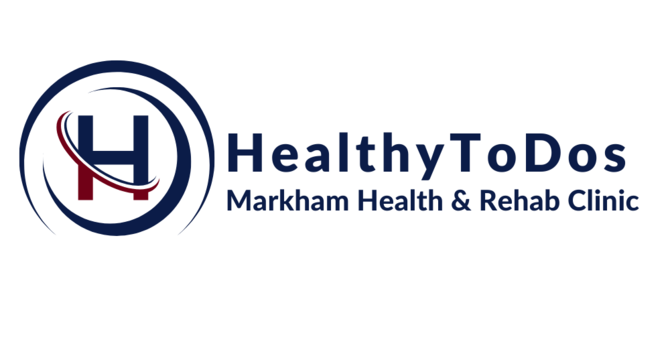
The Iron Epidemic: Why So Many Feel Tired, Foggy, and Drained
Have you ever wondered why, despite eating well and taking supplements, you still feel tired, weak, or short of breath? You’re not imagining things. Iron deficiency is one of the most common nutritional deficiencies in the world, especially among women. According to a study in 2025 from the American Journal of Obstetrics & Gynecology, "maternal iron deficiency anemia is a global health challenge with increased risk of adverse perinatal outcomes."
In fact, 1 in 4 women are iron deficient. Even more concerning, many people don’t even realize they’re iron deficient until their symptoms become severe. These symptoms might start subtly such as feeling colder than usual, experiencing brain fog, or noticing hair thinning. Over time, they can progress to more serious issues like severe fatigue, shortness of breath, and even depression or restless leg syndrome.
Iron is a critical mineral your body uses to carry oxygen through the blood and support energy levels. Yet it is surprisingly easy to become deficient, particularly if you have heavy menstrual bleeding, are pregnant or postpartum, follow a vegetarian or vegan diet, or have gut conditions that affect absorption.
Why Oral Iron Isn’t Always Enough (or Fast Enough)
If you’ve ever been prescribed oral iron supplements, you probably already know they can come with unpleasant side effects like nausea, constipation, and stomach discomfort. What’s more, oral iron can take months (sometimes even over a year!) to bring your levels back to normal, and that’s only if your body is able to absorb it well.
For many people, getting their ferritin levels up becomes a frustrating and slow process. Despite best efforts, your iron storage levels may remain low. This is where Iron IV therapy becomes a highly effective alternative.
Iron Infusions: Fast, Effective, and Safe
Iron IV therapy bypasses the digestive system completely, delivering iron directly into your bloodstream, where it can be absorbed and used by your body immediately. Most people begin to notice improvements in energy, focus, stamina, and mood within a few weeks of their first infusion.
At HealthyToDos, we offer two types of iron infusions:
- Venofer: 200 mg per infusion, typically used for pregnancy and more sensitive cases. Most people receive 3 to 5 infusions.
- Monoferric: 1,000 mg in a single session, often used when iron levels are critically low or when a faster approach is needed.
Iron Through the Life Stages: Before, During, and After Pregnancy
Before Pregnancy:
It is ideal to have your iron levels optimized before becoming pregnant. This supports both your energy and your baby’s development during early stages of pregnancy.
During Pregnancy:
Iron needs increase significantly during pregnancy. Your body requires up to 1,000 mg of extra iron to support your growing baby and placenta. By the third trimester, as many as 65 percent of pregnant women become iron deficient. If you are past 30 weeks and still showing low levels, oral supplements may not be fast enough. In this case, IV iron is the safest and most effective option to replenish your stores quickly.
After Delivery:
Labor and delivery lead to significant iron loss—approximately 250 mg during a vaginal birth and up to 500 mg during a cesarean section. Combine that with the demands of new parenthood and sleep deprivation, and iron deficiency can make postpartum recovery even more exhausting. An infusion can help rebuild your iron stores, boost your energy, and support a smoother recovery process.
What to Expect During Your Iron IV Therapy at HealthyToDos
Iron IV treatment is a straightforward and comfortable experience. Here’s what you can expect:
Step 1: Bloodwork and Assessment
We require recent lab results (within the last three months) showing your ferritin levels, complete blood count (CBC), and iron/TIBC. If you don’t have recent bloodwork, we can arrange it for you. During your consultation, our nurse practitioner will determine whether IV iron is appropriate. You will also receive a prescription and will need to pick up the iron medication from your pharmacy and bring it with you to your appointment.
Step 2: Personalized Treatment Plan
Once your bloodwork confirms iron deficiency, we’ll create a treatment plan tailored to your specific needs. Most patients begin with Venofer at 200 mg per infusion, typically requiring 3 to 5 sessions for full replenishment. If your iron levels are very low or if Venofer is not effective, we may transition you to Monoferric (1,000 mg), which can often be completed in a single visit. For pregnant patients, we use Venofer exclusively, as it is a safe and well-tolerated option during the second and third trimesters.
Step 3: Infusion Appointment
Your first infusion visit may take up to 90 minutes as we go slowly to monitor your response. The iron drip itself takes between 20 and 60 minutes. Most people find it relaxing and comfortable.
Step 4: Follow-Up
We’ll repeat your bloodwork 4 to 6 weeks after your final infusion to check if your iron levels have returned to normal. In most cases, 3 to 5 infusions are enough.
Is Iron IV Therapy Safe?
Yes. IV iron is a well-researched and safe treatment, including during pregnancy and breastfeeding. Side effects are generally mild and temporary. Some people may experience a headache, joint or muscle aches, nausea, dizziness, or a metallic taste during the infusion. Rarely, blood pressure may drop slightly. Our team is fully trained to monitor and manage your safety throughout the entire process, adjusting the infusion speed as needed.
Frequently Asked Questions (FAQ):
Q: Can I get an iron infusion without a doctor’s referral?
A: Absolutely. Our in-clinic nurse practitioner can assess you, order bloodwork, and provide a prescription for the iron if needed.
Q: What is the process to get an Iron IV infusion?
A: You’ll begin with a consultation with our nurse practitioner. Please bring recent lab results or let us know if you need help arranging them. Once approved, you’ll pick up the iron from your pharmacy and book your infusion appointment.
Q: Is IV iron safe during pregnancy?
A: Yes, we use Venofer, which is a safe and widely used option during the 2nd and 3rd trimesters.
Q: What do I need to bring to my appointment?
A: For your initial consultation, please bring your recent blood test results, including CBC, Ferritin, and Iron/TIBC levels (within the past 3 months).
For your infusion appointment, bring your prescribed iron medication (picked up from the pharmacy) and any insurance information you may need for coverage.
Still have questions?
Book a consultation with our Nurse Practitioner Today
Reference
- Derman RJ, Bellad MB, Somannavar MS, Bhandari S, Mehta S, Mehta S, Sharma DK, Kumar Y, Charantimath U, Patil AP, Mallapur AA, Ramadurg U, Sangavi R, Patil PS, Roy S, Vastrad P, Shekhar C, Leiby BE, Hartman RL, Georgieff M, Mennemeyer S, Aghai Z, Thind S, Boelig RC; RAPIDIRON Trial Group (Appendix). Single-dose intravenous iron vs oral iron for treatment of maternal iron deficiency anemia: a randomized clinical trial. Am J Obstet Gynecol. 2025 Feb 3:S0002-9378(25)00070-5. doi: 10.1016/j.ajog.2025.01.037. Epub ahead of print. PMID: 39909327.
- IronRx. FAQ [Internet]. IronRx; [cited 2025 May 28]. Available from: https://www.ironrxcourse.com/pages/faq


